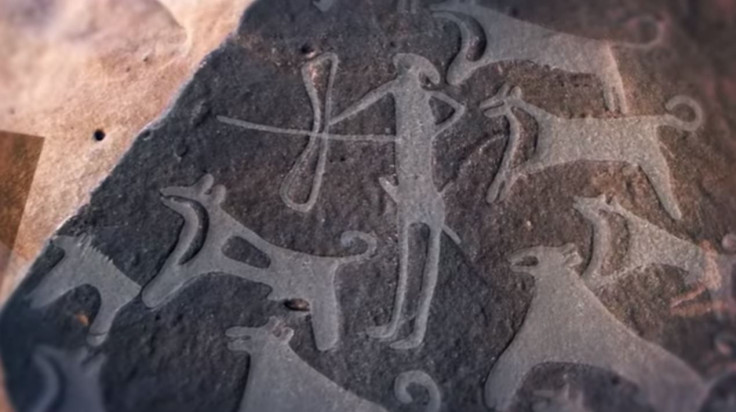Man's Oldest Friend: Ancient Rock Carvings Show Dogs On Leashes

Humans have known that dogs are good boys and girls for thousands of years, based on ancient rock carvings in Saudi Arabia that show people holding dogs on leashes and using them while hunting. Researchers say the carvings, which might have been made between 8,000 and 9,000 years ago at two locations in the Arabian Desert, could be the earliest depictions of man’s best friend.
The doggies would have lived before it is believed that humans in that area domesticated dogs and started using them for herding. This information comes from skeletal remains and other stone depictions. These newly discovered carvings suggest the domestication, while not for herding purposes, occurred earlier, so the ancient people could have some help hunting for other creatures.
They show large groups of dogs around hunters with bows, and the dogs all have their own kinds of markings.
A study in the journal Science describes the dogs as being “medium-sized canines — with pricked up ears, short snouts, and curled tails.” They are attached to human hunters’ waists by leashes that lead to their necks.
Another study, in the Journal of Anthropological Archaeology, says the puppers are “reminiscent of the modern Canaan dog,” a breed from the Middle East with a variety of colors and markings that can grow to a couple of feet tall and weigh about 45 pounds.
“The leashing of dogs not only shows a high level of control over hunting dogs before the onset of the Neolithic, but also that some dogs performed different hunting tasks than others,” that latter study explains.
Humans are believed to have settled the area of Saudi Arabia about 10,000 years ago, and these hunting dogs could have been helping out their owners as quickly as a millennium after that. That doesn’t mean these Saudi Arabian canines are the earliest domesticated dogs, but the carvings could be the earliest evidence of the use of leashes.
“If the dating holds up, this would be the earliest evidence for dog leashes in the archaeological record by thousands of years,” according to the study in Science. “Scientists speculate that these early dogs may have helped humans survive in this harsh landscape.”
The scientists analyzed the way the rock was weathered and the context of the other carvings in the area to reach their conclusion about the dog carvings’ roots, but more research is needed to confirm the timeframe in which they were made.
They also suggest it is possible that what has been interpreted as leashes are instead a symbolic connection between human and dog.
© Copyright IBTimes 2024. All rights reserved.




















